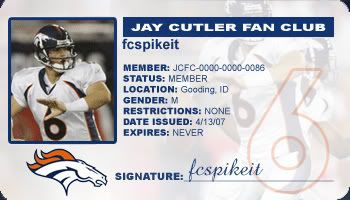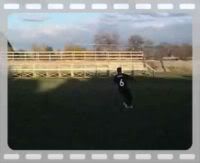Sadly, the tale of Spencer Larsen and his NFL draft prospects can mostly be told in 4.9 seconds.
It should be a little more complicated than that. We hope you stick with us for a couple of minutes here.
But back to that 4.9 seconds. That time is, give or take a few hundredths of a second and depending on whose thumb was on the stopwatch, the time the former Arizona linebacker took to cover 40 yards at the NFL Combine in February.
As if that time - over an arbitrary distance established long ago - defines his entire value as a football player.
"I wish I would have done better," Larsen said of his 40 time. "Yeah, that is going to affect how high I get drafted and how much money I make right off the bat."
I like the NFL draft. Could waste a whole weekend watching it in high def. But I don't really get it.
The NFL's hyper-reliance on a 40-yard dash time is ridiculous. Fast is good. Faster is better. Everyone understands that. But the 40 time too often becomes a crutch for scouts and front office personnel to cover their butts.
If a fast guy doesn't work out, it's probably the player's fault. If a slower guy doesn't work out . . . well, the cry is more like, "What knucklehead drafted this slug?"
Larsen's stock rose during last season, held up in postseason workouts, then dropped quickly when he happened to run slowly.
"He is a good player who just doesn't have the measurable numbers that most teams look at," said analyst Rob Rang of NFLdraftscout.com
"He will have to find a team that is willing to overlook the measurables and see what he has done in games. His instincts and flair for the game make him a prospect that somebody is going to take a chance on."
Take a chance on?
Larsen seems to me more like a guy you jump on and sock away on your roster for the next several years.
Larsen might have 4.7 speed or 4.8 speed or 4.9 speed depending on the day - not a super measurable in any account. Perhaps he's one-tenth of a second slower than someone comparable on the draft board.
But what if the smart and savvy Larsen can recognize, read and react to a play four-tenths of a second faster than the other guy? Shouldn't that count for more?
"You would think," Larsen said. "You would think."
Larsen, who led the Pac-10 last season with 10.9 tackles per game, is projected anywhere from the fourth to seventh round. That could make for a long Sunday if he slides toward the bottom and waits for his phone to ring on the second day of the draft.
"The stuff to be nervous about is over," Larsen said.
"As far as getting prepared to play at the next level, I feel I did a great job. I feel I'm in the best shape of my life. I'm mentally and physically ready."
The NFL - well, at least the Tennessee Titans - thought ex-UA running back Chris Henry was ready last season. He wowed the scouts with his physical prowess and blazing speed. They blinked and overlooked his inadequate on-field résumé.
He played sparsely and unremarkably as a rookie, matching his UA career.
At least Henry had the good sense to leave school early and enter the draft in what was a weak year for running backs. The Titans picked him in the second round, the fourth running back selected.
Henry, if he had come out for this draft, loaded with running backs, would have been no better than about the 10th-rated running back.
But he had that great 40 time.
He made it work for him.
Larsen doesn't have that great 40 time.
He's going to have to work for whatever he gets.
"(The scouts) are always looking for a reason to downplay anything good you do," Larsen said.
"But that's their job. They want to make sure they don't end up getting less than they paid for. Their whole goal is to get more than they paid for."
My guess is that Larsen, wherever he is drafted, will be worth every penny . . . and then some.




 Reply With Quote
Reply With Quote







